
A properly cooked duck makes a wonderful meal, with a well-crisped skin and its characteristically rich, dark meat. However, arriving at that perfect finish can be an exercise in frustration for inexperienced cooks. Most recipes call for cooking the bird at a high temperature, to render the fat from under its skin. This crisps the skin, but often overcooks the bird and leaves it dry. For a moist duck, low-heat cooking is often better.
The Fat Problem
The unusual anatomy of ducks is a large part of the problem. Their meat is very lean and dark, and can become tough and dry if it's overcooked. Between the duck's skin and its flesh is a thick layer of insulating fat, which protects the duck from cold water. Rendering out this fat so the skin can become crispy, takes high heat. With a young and tender duckling, the bird can be split open and grilled flat at high temperatures. This renders the fat without overcooking the bird. For most ducks, a slow-cooking strategy results in a moister, tenderer bird.
Advance Preparation
To render and crisp the duck effectively, starting a day ahead -- or at least a few hours -- can help. Remove any visible lumps of fat, and prick the duck's skin all over with a skewer. Don't puncture the flesh -- just the skin. Place the duck in boiling water for five minutes, then drain it and pat it dry. Rest the duck in the dry environment of your refrigerator for at least an hour or two, and preferably overnight. This dries the skin, and helps it crisp. Finally, use a sharp knife to score the skin lightly in a cross-hatch pattern. Again, make shallow cuts though the skin that don't pierce the flesh.
Roasting the Duck
Place the duck on the rack of your roaster, and season it as directed in your recipe. Roast it in a preheated oven at 300 degrees Fahrenheit for about two hours, turning it after an hour. Use a baster bulb to remove excess fat at the same time. One duck can easily render out more than a cup of fat. After two hours, increase the oven's heat to 400 F and return the duck to the oven for about 20 minutes, until well-browned and crisp-skinned. Its internal temperature should reach 165 F. If you're glazing the duck, apply the glaze for the last 15 minutes. Let the bird rest for 10 minutes before you carve it, for the juiciest end result.
Very Low Temperature Cooking
Some recipes call for cooking your duck at unusually low temperatures, either in a very low oven -- often only 200 F -- or through a process called "sous vide." In sous vide cookery, the duck is enclosed in a vacuum bag and cooked in hot water at precisely controlled temperatures. Although either technique will result in a very juicy duck, the skin will not be crisp. The very slow cooking also raises questions of food safety. The duck spends hours in the "danger zone" between 40 F and 140 F, where bacteria flourish. If the bird isn't finished to a food-safe temperature of 165 F, there's an unnecessarily high risk of foodborne illness.
Related Articles

How to Cook a Crispy & Juicy Whole Duck

How to Grill a Cornish Hen on the ...

Cooking Poultry With a Convection Vs. ...

How to Cook a Goose on the Grill

How to Tenderize Gizzards
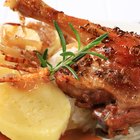
How to Cook a Crispy Duck in a ...

How to Roast a Duck on a Grill

How to Cook Walleye by Broiling
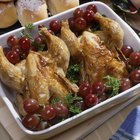
How to Cook a Cornish Game Hen in a ...

How to Cook Duck Fillets

How to Marinate BBQ Chicken Thighs & ...
Easy Cornish Game Hen Meals

Should a Pheasant Be Cooked With or ...
The Best Way to Cook a Small Turkey ...

Can You Roast Whole Frying Chickens?

How to Cook a Pheasant Breast So That ...
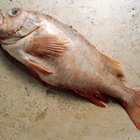
How to Cook Redfish on a Grill
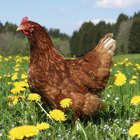
Free Range Chicken Cooking Tips
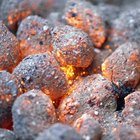
How to Cook Quail on a Grill
How to Bake Dove and Quail
References
- On Food and Cooking: The Science and Lore of the Kitchen; Harold McGee
- USDA Food Safety and Inspection Service: Duck and Goose from Farm to Table
Writer Bio
Fred Decker is a trained chef and prolific freelance writer. In previous careers, he sold insurance and mutual funds, and was a longtime retailer. He was educated at Memorial University of Newfoundland and the Northern Alberta Institute of Technology. His articles have appeared on numerous home and garden sites including GoneOutdoors, TheNest and eHow.
Photo Credits
Eising/Photodisc/Getty Images